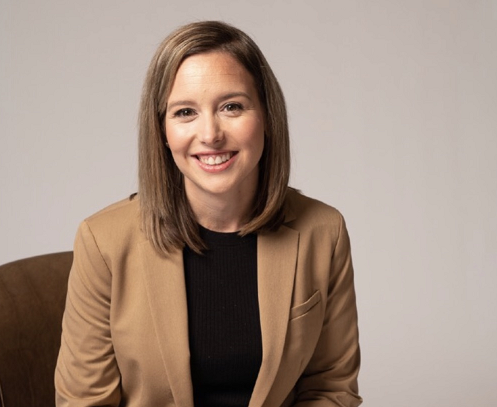

Valerie Hoffmann, PhD. is the Head of Research at Meru Health
Philippe Goldin, PhD. is a Professor at UC Davis & leads the Clinically Applied Affective Neuroscience Laboratory. He is also a Scientific Advisor to Meru Health.
How can different mind training techniques be used in depression and anxiety treatments and in which way do they differ from each other? Dr. Philippe Goldin is a Scientific Advisor at Meru Health, a Professor at UC Davis, and leads the Clinically Applied Affective Neuroscience Laboratory. He has been doing extensive research on cognitive-behavioral therapy, mindfulness-based stress reduction, and compassion cultivation training in adults with anxiety, depression, and chronic pain disorders. Meru Health’s Head of research, Dr. Valerie Hoffman sat down with Dr. Goldin, to explore what are the different ways our minds can be trained to loosen the grip of depression or anxiety.
This video interview has been edited and condensed for clarity.
Q
Much of your research focuses on how different clinical interventions can affect how we feel. At a high level, how mindfulness meditation, compassion practices and CBT impact our mood and anxiety?
A
What’s important to understand is that all these different forms of interventions are ways of training skills. And one of the primary skills that we train is emotion regulation. These are specific strategies for identifying different emotions and then being able to up-or down-regulate their intensity or their duration. So, let’s first take cognitive behavioral therapy, CBT for short. One of the core components of CBT is to teach people how to identify emotions and how to use cognitive reappraisal or cognitive restructuring. This is really about taking perspective and being able to see your current emotion from many different viewpoints. When you can do that, you can reinterpret the context or the meaning, and then being able to down-regulate the intensity of negative emotions: anger, fear, or sadness. This way your mind becomes slightly more flexible.
In mindfulness meditation, many different techniques can be used, aiming to train the mind to
- slow down
- widen the view
- observe what is happening with less projection or overlay, and
- bring a sense of curiosity and acceptance to it. Active acceptance in particular, where you can just say: ‘oh this is what is happening’, whether the feeling is pleasant, unpleasant or neutral.
What we need is fierce courage and trust, that even if I don’t do anything active, what I am experiencing from this moment to the next moment to the next moment… is impermanent, transient. So this is a totally different form of working with one’s mental content than say for example cognitive reappraisal where you’re actively using language, logic, and thinking.
Compassion practices, and there is a whole set of those just as there’s a whole set of mindfulness practices, are more advanced practices, that get one to begin to shift the focus is on me, my feelings, my emotions, my worries, to what are others are feeling and going through. That allows me to get out of my own “sticky mind”, so to speak, and to become more interested in either a single person, a set of people, or even all living beings and understanding my relationship to all of them. And suddenly I am not alone, and the narrative is not just about me.
Q
If you had a patient come to you, with depression and anxiety, how would you determine whether to start with CBT vs. Mindfulness vs. the Compassion training?
A
Oh, that’s a great question – and a complex one! We don’t have that level of specificity in clinical science yet that would tell us an accurate answer to that. In general, some CBT is always a good start, with or without medication. Depending on if they are experiencing very severe anxiety or major depression, medication might be needed to bring down the intensity of the symptoms a little bit. You want your brain and mind resources to be available to then really do the work of learning: How do I identify different emotions? How do I take perspective? How do I get caught or use language or interpretation to regulate my emotions as opposed to being regulated by them?
Important is to learn how to shift the perspective: that having emotions of any kind: positive, negative, wonderful, scary… learning that the emotions are sources of information. And that in and of themselves emotions are a gift, because they are immediate feedback on how I am doing and how I am relating to others right this moment. When people are feeling anxious and getting caught in fear or worry, or if they are depressed, and might have this deep heavy sadness and feel stuck in the mud, what CBT does, it helps to clarify some of those relationships.
Then I would recommend some mindfulness training because that’s the next down in what I call the “inner archaeology” of working with our mind. The set of practices under the rubric “mindfulness” are sets of tools to identify how does the mind get stuck or how does it release from habits. So that’s a bit more subtle and very complimentary for CBT.
Compassion would come last because that’s more intense. Be it self-compassion, compassion or kindness towards self or compassion towards others – I would do that later after one has learned how to stabilize the mind enough to be able to do these deeper level practices.
Q
How do negative self-beliefs impact our mental health and how can they be shifted using these techniques?
A
Research shows that there are probably 20–30 different kinds of negative schemas and most of us gravitate towards some subset of those. One of the things that you can think about is that how can you begin to befriend those beliefs, realizing that “this is just a thought”. From a brain perspective, we know that there is a language network, three different brain regions of the left hemisphere (for people who are right-handed, so for most of us) and that neural circuit produces thoughts. From research, we know that there are 4 to 5 negative thoughts to one positive thought. This is just a ratio that has been built into our biology through evolution and probably for a good purpose, to protect ourselves and being a little bit hesitant and careful. But when that increases too much… then we spend a lot of time in negative thought land. That can come harmful for our relationships with others, with ourselves, with our vision of ourselves, with our vision of ourselves to the future, etc. That is why it is important to be sensitive to when our mind’s negative thoughts have such intensity or frequency that they are interfering with the quality of life. The goal is not to get to zero negative thoughts, then we would not be human. But to induce kind of psychological flexibility… a repertoire of skills that allow me to be with all that mental content, not be subjected or caught by that.
There is one way to work with the thoughts. To think that this is simply my mind and my brain doing what it’s supposed to do. And a negative thought will only last as long as I give it space. When a thought arises and if I do nothing – my mind is going to move to something else. That is the nature of the mind. When we have anxiety or depression my mind gets stuck. I like to call it “sticky glue” or “crazy glue”. All of these skills about learning how to work with the mind are like the DD40. It loosens up the murkiness, the grit. So that you can see reality, relate to the contents of one’s own mind, in a slightly more easy, flexible manner. And again, the goal is not to go to zero, the goal is to be able to sit with, embrace and befriend anything that arises in the mind. The good, the bad, and the ugly.
Q
We know you do a lot of research around these
topics – can you walk us through one of the emotion regulation techniques used in your research?
A
Yes, sure. Let me contrast reappraisal, cognitive reappraisal vs. acceptancefor example. What I would do with you, is I would have you write some autobiographical stories from your life, ofanxiety-induced situations. Then I would ask you to imagine yourself in that situation and bring into mind what arethe beliefs you have. People are really good at generating those negative self-beliefs! Then I would tell you that Iam going to present you with your own autobiographical story. Then when you don’t even know, unexpectedly, I am goingto have a flash of your own negative self-belief. At times I am going to ask you just to notice your mind’s reactionto that belief, that might be: “I am not okay the way I am” or “people think I am weird”, etc. We all have ourfavorites. Other times I am going to ask you to re-frame it: How can I think about that thought, reinterpret it in away that reduces its toxicity and intensity? Then you might go: “Other people think that I am socially awkward”. Andthen I might go: “Oh, that’s a thought. Wait a second. Last week my friend said that she enjoys spending time with me.And even when I have the thought that I am awkward or anxious, that may not be the way the other people actually seeme.” So suddenly my intensity starts to go down, my respiration becomes calmer, my skin conducts goes down, my heartrate goes down, the brain activity in those brain regions starts to decrease and I start to be slightly more calm,even when I am are having that thought. So that’s a very active language, logic, disputation, challenging,transforming mode.
Completely on the other side, a kind of a radical emotional acceptance mode,a form of emotion regulation would be observing. So then the process would go: “I am not okay the way I am”, “peoplethink that I am awkward.” And what I do is that I simply observe, without any intention to change, challenge ortransform it, no language or logic. Simply noticing any pattern of reactivity. Sitting with that, having afirst-person experience that even when I don’t do any active challenging or change, it will change by itself. However,it is not intuitive, some people may think that it’s passive but in fact, it’s a very powerful, active stance to theexperience of my own body and mind. Then when I have the direct experience that I don’t challenge anything, anypattern of reactivity that I am having – physical or mental – will change in and of itself. When I have the directexperience of the impermanence of any pattern or reactivity, i.e. acceptance, mindful acceptance, expanding the fieldof view, etc. That is far less effortful than cognitive reappraisal, easier to implement, and potentially, moretransforming. It’s a completely different mode of relating to one’s moment-to-moment experience. One is not betterthan the other. If you are going off to work on your own mind it is better to have more tools than just one.
Q
What would you say your take-home message is today?
A
The fact that our brain, mind, is flexible, organic, modifiable – is incredibly hopeful. No matter how stuck I think I am, I have had my moments of feeling blue, depressed down or anxious like everyone else, knowing that there are tools and methods for alleviating the intensity of depression and anxiety, that is based in our brains, in our evolution – that is incredibly hopeful.
Philippe Goldin is a Professor at UC Davis and leads the Clinically Applied Affective Neuroscience Laboratory. His team is doing extensive research on Cognitive-Behavioral Therapy, Mindfulness-Based Stress Reduction, and Compassion Cultivation Training. He also serves as a scientific advisor to Meru Health.
Valerie Hoffman holds a Ph.D. in Psychiatric Epidemiology from Johns Hopkins Bloomberg School of Public Health, and a Master’s degree in Public Health from Yale University. She has been studying psychiatric epidemiology for two decades and published over 70 peer-reviewed research papers. Valerie is the Head of Research at Meru Health, where she is part of developing a novel, technology-based integrated mental health solution to battle depression, anxiety, and burnout.





